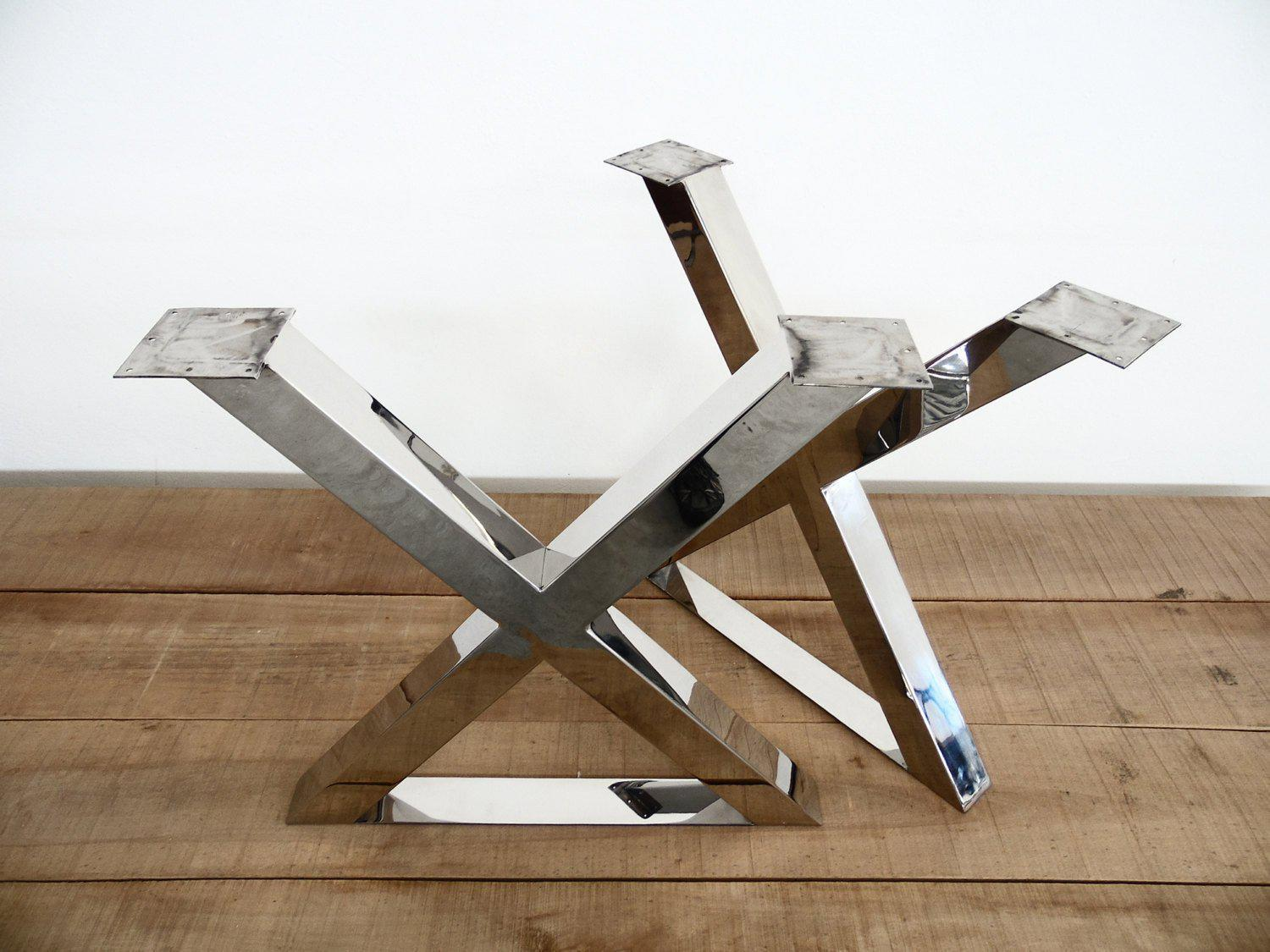A Detailed Appearance at Eating Table Leg Styles: Discovering the Ideal Suit
Picking the ideal table leg design is crucial for both visual charm and practical capability. Typical four legs offer classic sophistication and stability, while the stand base supplies enhanced legroom and a modern-day look. For those with bigger tables, trestle legs make sure sturdy assistance, whereas hairpin legs present a mid-century contemporary ambiance with their minimalist layout. The x-shaped legs blend modern style with boosted stability. Each of these options brings one-of-a-kind benefits, making the selection a lot more than simply a matter of choice. Check out further to find which style completely complements your dining area and lifestyle.
Traditional 4 Legs
Amongst the different types of dining table leg styles, the traditional four-leg design remains a classic selection for lots of families. Four legs offer balanced assistance, making certain the table continues to be steady and capable of bearing substantial weight (dining room table legs).
From a visual viewpoint, the standard four-leg style can be easily adjusted to different interior designs. Whether crafted from timber, metal, or a mix of products, these legs can be elaborately sculpted, streamlined and minimalistic, or anything in between. Their adaptability enables them to complement both rustic and modern settings seamlessly.
Additionally, the simple structure of the four-leg layout facilitates ease of motion and placement within a space. Unlike even more complicated bases, this style reduces blockages, offering ample legroom for restaurants. In summary, the typical four-leg table leg style weds withstanding elegance with functional functionality, making it a sharp choice for those seeking both type and function in their dining furnishings.
Pedestal Base
Often commemorated for its stylish and space-efficient layout, the pedestal base is a notable alternative to the typical four-leg configuration in table leg styles. This distinct base generally includes a solitary main column supporting the tabletop, which can vary in form, from ornately carved timber to streamlined, modern-day metal. Among the primary benefits of the stand base is its ability to take full advantage of legroom and seating adaptability. Without edge legs, restaurants are afforded higher liberty of movement, making it an optimal selection for round and oval tables that promote even more intimate and comprehensive gatherings.
Additionally, the stand base's main support can deal with considerable weight, enabling for using much heavier table tops, such as marble or thick wood. This strength combined with its visual adaptability makes the stand base a preferred option in both standard and modern indoor setups. It can flawlessly incorporate with different style styles, from classic style to minimal modernity. In addition, the main column itself uses a canvas for complex styles and creative expressions, adding an element of aesthetic passion underneath the table. In recap, the pedestal base combines performance with design, making it a fine-tuned and functional option for diverse dining settings.
Trestle Legs
Trestle legs give a robust and ageless foundation for eating tables, characterized by their straight cross-bracing and tough assistance light beams. Originating from middle ages times, this design has developed yet preserved its necessary framework, making it a seasonal fave in both standard and modern settings. The central trestle beam of light, often sustained by two or even more upright blog posts, offers exceptional stability, allowing for larger table sizes without the need for additional legs.
A significant benefit of trestle leg tables is the adequate legroom they offer. Unlike tables with four corner legs, the lack of obstructions at the table's sides offers unblocked space for chairs and diners, boosting convenience and access. This makes trestle tables excellent for suiting bigger events, whether in an eating area or a reception hall.
The visual adaptability of trestle legs is notable. Available in a range of products such as timber, metal, and composite, they next page can be ended up to match a wide variety of indoor styles. From rustic farmhouse to sleek blog here contemporary layouts, trestle legs can be tailored to suit private preferences. Their enduring appeal and practical benefits make trestle legs a compelling option for those looking for both style and functionality in their dining table.
Barrette Legs

The charm of barrette legs hinges on their simpleness and flexibility - dining room table legs. Readily available in a series of products, including steel and brass, they can be completed in many shades to match various indoor designs. Whether coupled with a rustic wooden table top or a contemporary glass surface area, barrette legs effortlessly mix performance with a touch of vintage beauty
Longevity is another noteworthy feature of hairpin legs. Regardless of their fragile look, these legs are engineered to bear significant weight, guaranteeing the eating table remains secure and safe. Furthermore, they are relatively very easy to mount, making them a popular option for do it yourself lovers and specialist furniture makers alike.
X-Shaped Legs

Created from products such as steel, timber, or a mix of both, X-shaped legs can be tailored to match numerous style preferences. Steel legs commonly lend a streamlined and industrial feel, perfect for loft-style houses and modern dining rooms.
Furthermore, the design behind X-shaped legs guarantees also weight circulation, minimizing the risk of wobbling and enhancing durability. This makes them particularly appropriate for bigger table that require additional support. Basically, X-shaped legs blend sensible design with contemporary aesthetic appeals, making them a classic choice for varied dining atmospheres.
Final Thought
A thorough understanding of eating table leg styles reveals the distinct characteristics and advantages of each design. Standard 4 legs provide stability and this content timeless allure, while pedestal bases provide legroom and a streamlined look. Trestle legs make certain robust assistance for larger tables, and hairpin legs introduce a mid-century modern aesthetic. X-shaped legs integrate contemporary layout with boosted security. Picking the proper leg design makes sure both practical and visual contentment in any kind of eating space.